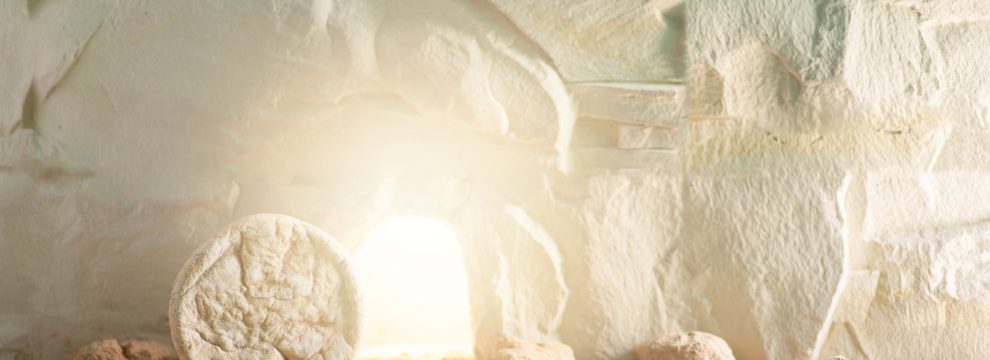The resurrection event that changed everything—on both sides of the Judaic-Messianic bridge. What an orthodox rabbi and Jewish scholars have to say about the resurrection of Jesus (Yeshua, his Hebrew name).
© desireofmysoul.faith & SoulBreaths.com. All rights reserved.
READING TIME: 7 MINUTES.
HAVE YOU READ THE FIRST POSTS IN THIS SERIES?
What God Revealed
Real-Life Accounts
Real-Life Accounts Cont’d
The Resurrection Thunderbolt From Heaven
The world’s history has long encompassed extremes—light and darkness, goodness and evil, sagacity and folly, hope and discouragement . . . and the ultimate dichotomy, death and resurrection.
It’s the stuff authors love to write about, carefully mirroring our up-down, soul-body existence in their art, which sometimes is reflected back into life. Remember the seesaw duality of Dickens’ A Tale of Two Cities?
It was the best of times, it was the worst of times,
it was the age of wisdom, it was the age of foolishness . . .
it was the season of Light, it was the season of Darkness
Thankfully, God doesn’t leave us in our fractured state. We will rise from the abyss of death.
But in sync with life’s duality, even the resurrection event is good news/bad news. There will be a resurrection to everlasting life for the righteous . . . and a resurrection to judgment for the others. (Daniel 12:2 and John 5:28-29.)
This is serious business. So God gave us ten resurrection accounts—seriously, count them—to encourage us, to help us see our lives down here via a more heavenly lens. (See prior posts in this series.)
And yet, all those resurrection accounts beg the question.
Since resurrection is an obvious biblical teaching,
then why do some people give
an acknowledging nod
to many of those accounts . . .
but discount one resurrection in particular?
Namely, the historical resurrection of Jesus.
Well, one modern-day orthodox rabbi didn’t.
Nor did some other Jewish biblical scholars and rabbis.
MEET RABBI PINCHAS LAPIDE
author, Jewish scholar, theologian specializing in the New Testament
An Orthodox rabbi, Lapide had a real bridge-crossing view. He even wrote a book in 1979 about it: “The Resurrection of Jesus: A Jewish Perspective.”It made quite a stir back then, even garnering attention in Time magazine’s religion section.
Lapide (1922-1997) and his scholarly process were all about rediscovering the Jewish aspects of early Christianity. After all, Jesus (Yeshua) and his followers were Jews.
Lapide’s convincing Judaic arguments in favor of Jesus’s resurrection as a historic event are worth examining.
I mean, rabbis, some of the Sanhedrin, and Pharisees—not to mention multitudes of Jews—recognized in the first century CE that Jesus (Yeshua) is the Messiah. So when a modern-day rabbi studies the totality of the scriptures and supports Jesus’s resurrection, it’s a red-letter moment.
Per Lapide, the “Hebrew Bible knows of the translation of Enoch (Genesis 5:24), a transfiguration (Saul: I Samuel 10:6), an ascension (Elijah: 2 Kings 2:11) and three resurrections[which God] carried out through the hands of His prophets.”
Namely: I Kings 7: 17-24; 2 Kings 4:18-21, 32-37; 2 Kings 13:20-21.
Not a single case was met with unbelief in Israel, per Lapide.
Nope, not one.
The hope and belief in resurrection were so ingrained in Judaic thinking, it became part of the daily prayer from renowned 12th-century rabbinic scholar, Moses ben Maimonides and his Thirteen Articles of Faith:
Lapide also commented that postbiblical literature gives reports of several miraculous healings, multiplication of bread, diversion of a flood, victory over demons, rainfall after prayer, etc.
So the historic resurrection of Jesus
wasn’t a bizarre, non-Jewish event.
And it wasn’t so-called magic or a scheme.
It was real.
From the hand of Adonai, God Himself.
In fact, over the 40-day period following his resurrection,
Jesus appeared to his disciples, others, and over 500 people at once.
In addition to Lapide’s scientific analysis of Jesus’s resurrection—which includes support for the genuineness of Saul Paulus’ Damascene experience—he mentioned two other points as further support:
(1) God permitted the women to be the first to witness and give testimony of that resurrection—when they held no value in the culture.
(2) Many Jewish believers were willing to die defending their belief in Jesus’s resurrection.
Per Rabbi Pinchas Lapide:
“Without the Sinai experience—no Judaism.
Without the Easter [Crucifixion/Resurrection] experience—no Christianity.
Both were Jewish faith experiences whose radiating power . . .
were meant for the world of nations.
For inscrutable reasons, the resurrection faith of Golgotha was necessary to carry the message of Sinai into the world.”
THREE FINE POINTS
Point #1. Messiahship. Now I don’t agree with Lapide’s initial inference that Jesus (Yeshua) is only the messiah for the Gentiles (the Bible prophesies/mentions only ONE messiah)—but Lapid did say that in Jesus’s parousia (second coming) he would manifest himself as Israel’s Messiah.
To clarify that . . . the prophet Zechariah says that what actually happens at the second coming is this: Israel’s spiritual eyes are open, the veil is removed, so they can see Jesus (Yeshua) for who he is and always has been, the Jewish Messiah of the world.
I will pour out on the house of David
and on those living in Jerusalem
a spirit of grace and prayer;
and they will look to me, whom they pierced.
They will mourn for him as one mourns for an only son;
they will be in bitterness on his behalf
like the bitterness for a firstborn son.
—Zechariah 12:10
There is one Messiah—per scriptures—sent by God
for the Jew first and then for the Gentile.
And Jesus fulfilled all the prophecies, over 100 (some classify 300 or more). Including the Messiah’s initial coming for spiritual redemption,
which will be followed by the final physical redemption,
ushering in the Messianic Age, the Millennial Kingdom.
Point #2. Probability factor. The scientific probability of Jesus (Yeshua) fulfilling the many messianic prophecies is mind-boggling. As Lion and Lamb Ministry aptly states on their site, referencing the noted work of now-deceased mathematics/astronomy university chair Peter Stoner:
“The chances of fulfilling 16 [of the 108 prophecies] is 1 in 1045.
When you get to a total of 48 [prophecies fulfilled],
the odds increase to 1 in 10157.
Accidental fulfillment of these prophecies is
simply beyond the realm of possibility.”
Point #3. Lapide and the hotly debated three-days-in-the-tomb issue. Even Christians battle out the calculations. [An easy method to me—keeping the literal meaning without gagging on a calculations gnat—is using our Judaic/biblical view that a day is measured sundown to sundown: (1st “day”) Friday daylight buried before Shabbat began; (2nd day) Friday sundown to Saturday sundown, still in the tomb; (3rd “day”) Saturday sundown to Sunday morning, arose on that third day.]
Lapide offers another layer: He says the three-day time frame is also a biblical expression in the Hebrew Bible.
>Those with ears biblically educated, per Lapide, the three-days-in-the-tomb expression refers to the clear evidence of God’s mercy and grace that is revealed after two days of affliction and death by way of redemption.
- Genesis 22:4. On the third day, Abraham lifted his eyes . . . [before the Akedah, the binding of Isaac]
- Exodus 19: 16. On the morning of the third day, there was thunder . . . [before God’s Sinai appearance]
- Genesis 42:18. On the third day, Joseph said to them . . . [before releasing his brothers—except one—to return to Canaan]
- Jonah 1:17. Jonah was in the belly of the fish three days . . . [before he was saved]
- Esther 5:1. On the third day, Esther put on her royal robes . . . [Israel saved after bitter affliction]
- Hosea 6:2. After two days he will revive us; on the third day he will raise us up . . . [before He comes like the spring rain to water their souls ]
JESUS & JEWISH BIBLICAL SCHOLARS
Per Lapide, the Pentecost testimony of the apostles—claiming the crucified Jesus had risen—proved a big pain you know where for the Sadducees. But for the Pharisees or the majority of Jews, it was a “problem seriously to be investigated.” They knew a resurrection was “entirely in the realm of the possible (Sanhedrin 90b).”
And also per Lapide’s book (pages 137-138, 142), the spiritual heirs of those Pharisees—today’s Jewish rabbis and biblical scholars—have commented on the matter from different angles.
J. Carmel—Israeli teacher/author—had an interesting view, saying he regrets the Gospels aren’t at home in the framework of Jewish literature. “If the prophet Elijah has ridden a fiery chariot into heaven, why should not Jesus rise and go to heaven?”
Exactly. Point is, Jesus didn’t fit the mold the pharisees (then and now) had devised. God had His own plan.
A plan of immeasurable love and forgiveness. A restoration plan from the throne of God.
For my thoughts are not your thoughts,
neither are your ways my ways, declares the Lord.
For as the heavens are higher than the earth,
so are my ways higher than your ways
and my thoughts than your thoughts.
—Isaiah 55:8-9 (ESV)
READ THE NEXT POSTS IN THE SERIES
Why A Bodily Resurrection
His Righteousness Can Be Yours
HAVE YOU READ THESE EARLIER POSTS IN THIS SERIES?
What God Revealed
Real-Life Accounts
Real-Life Accounts Cont’d
The Resurrection Thunderbolt From Heaven
Rabbi Scholars Defend Jesus’s Resurrection
PHOTO CREDITS:
Resurrection/Tomb photo by jchizhe, purchased on iStock.com (Stock photo ID:1243063771)
Western Wall photo by Dave Herring on Unsplash.com
Bridging the Distance photo by Marija Zaric on Unsplash.com
Lion photo by Jeff Rodgers on Unsplash.com
Resurrection series initially created between March 30, 2016 – July 3, 2016, then later divided into various posts for easier reading





